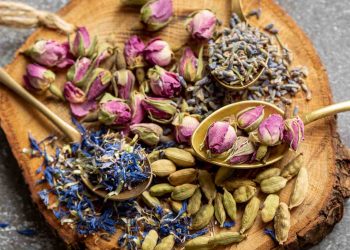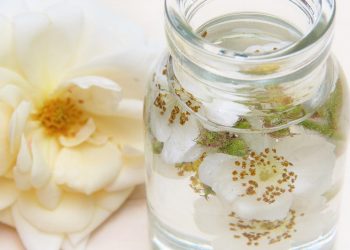Did you know that the ancient Egyptians revered rose petals not just for their beauty but also for their skin-loving properties? Cleopatra herself was said to bathe in rose water to maintain her renowned beauty. Fast forward to today, and we’re still enchanted by the delicate allure of roses—not just for their fragrance, but for their remarkable benefits for our skin. If you’re looking for a way to refresh your skin while indulging in a bit of luxury, here are five sumptuous methods to incorporate rose petals into your skincare routine.
Contents
1. Rose Petal Facial Steam
Why It Works
Facial steaming is a time-honored technique that opens up your pores and allows for deeper cleansing. When you add rose petals to the mix, you not only benefit from the steam but also from the natural oils and nutrients in the petals.
How to Do It
- Gather Your Ingredients: You’ll need a handful of fresh rose petals (organic is best), a large bowl, and boiling water.
- Prepare the Steam: Place the rose petals in the bowl and pour boiling water over them. Let it sit for a minute.
- Steam Your Face: Lean over the bowl with a towel draped over your head to trap the steam. Do this for about 10-15 minutes.
- Follow Up: After steaming, rinse your face with cool water to close the pores.
Pros and Cons
- Pros: This method hydrates and rejuvenates your skin, leaving it looking fresh and glowing. Plus, it feels incredibly indulgent!
- Cons: If you have sensitive skin, be cautious; steam can sometimes irritate.
2. Rose Petal Infused Oil
Why It Works
Creating a rose petal-infused oil is a luxurious way to harness the benefits of roses. The oil captures the essence of the petals and can be used for moisturizing or as a massage oil.
How to Do It
- Choose Your Base Oil: Opt for a light carrier oil like jojoba or sweet almond oil.
- Infusion Process: Fill a jar with rose petals and pour the oil over them, making sure they’re fully submerged. Seal the jar and place it in a sunny spot for about two weeks, shaking it gently every few days.
- Strain and Store: After two weeks, strain the oil into a clean bottle, discarding the petals.
Using the Oil
Apply the infused oil to your skin after showering for maximum absorption. You can also use it in your massage routine.
Pros and Cons
- Pros: This oil not only smells divine but also deeply hydrates the skin and can help improve the appearance of scars.
- Cons: It takes time to prepare, so patience is key.
3. Rose Petal Face Mask
Why It Works
Face masks are a fantastic way to deliver concentrated nutrients to your skin. Rose petals are rich in antioxidants and vitamins that can help soothe and rejuvenate.
How to Do It
- Ingredients: You’ll need fresh rose petals, honey, and yogurt.
- Blend It Together: In a blender, combine a handful of rose petals with a tablespoon of honey and a tablespoon of yogurt until you have a smooth paste.
- Apply: Spread the mixture evenly over your face, avoiding the eye area. Leave it on for 15-20 minutes.
- Rinse Off: Use warm water to gently wash off the mask.
Pros and Cons
- Pros: This mask hydrates and brightens your skin, making it perfect for a special occasion.
- Cons: If you’re allergic to honey or yogurt, you’ll want to skip this one.
4. Rose Petal Bath Soak
Why It Works
A rose petal bath is the epitome of luxury. Not only does it relax you, but it also softens your skin and adds a lovely scent.
How to Do It
- Prepare Your Bath: Start filling your tub with warm water.
- Add the Petals: Toss in a generous handful of fresh rose petals. You can also add some Epsom salts for extra relaxation.
- Soak: Immerse yourself for about 20-30 minutes, allowing the petals to work their magic.
Pros and Cons
- Pros: This is a perfect way to unwind after a long day, and your skin will feel incredibly soft afterward.
- Cons: Clean-up can be a bit tedious, as petals may stick to the tub.
5. Rose Petal Toner
Why It Works
Toners help to balance your skin’s pH and prepare it for moisturizer. Rose petals can be infused into a toner to provide soothing and anti-inflammatory benefits.
How to Do It
- Ingredients: You’ll need fresh rose petals, distilled water, and a spray bottle.
- Infuse the Water: Boil the distilled water and pour it over the rose petals in a bowl. Let it steep until cooled.
- Strain and Store: Strain the liquid into a spray bottle. You can store it in the fridge for a refreshing mist.
- Use It: Spritz on your face after cleansing or throughout the day.
Pros and Cons
- Pros: This toner is incredibly refreshing and can be used as a makeup setting spray.
- Cons: It has a shorter shelf life than commercial toners, so be sure to use it within a week or two.
FAQs
1. Can I use dried rose petals instead of fresh ones?
Yes, you can, but fresh petals tend to have more nutrients and a stronger fragrance. If using dried petals, ensure they are organic and free from additives.
2. Are there any side effects of using rose petals on the skin?
Most people can use rose petals without any issues. However, if you have sensitive skin, it’s always a good idea to do a patch test first.
3. How often can I use these rose petal treatments?
You can enjoy these luxurious treatments as often as you like! For best results, consider incorporating them into your weekly skincare routine.
4. Where can I find organic rose petals?
You can find organic rose petals at local farmers’ markets, specialty grocery stores, or online retailers that focus on organic products.
Conclusion
Incorporating rose petals into your skincare routine is not just about luxury; it’s about embracing the natural beauty that these delicate flowers offer. From soothing facial steams to rejuvenating masks, each method provides a unique way to refresh your skin while indulging in a little self-care. So why not treat yourself? After all, a little luxury can go a long way in enhancing your skincare routine.
Remember, while these treatments can be incredibly beneficial, everyone’s skin is different. It’s always a good idea to consult with a skincare professional if you have specific concerns. Enjoy your journey to a fresher, more radiant complexion with the timeless elegance of rose petals!
Disclaimer: This article is for educational purposes only and is not a substitute for professional medical advice. Always consult a qualified healthcare provider before making changes to your health routine.
References
-
Bhandari, P., & Shrestha, M. (2020). Rose Petals: A Review on Its Phytochemistry and Therapeutic Potential. Journal of Medicinal Plants Research, 14(1), 1-10. Link
-
Mayo Clinic. (2022). Skincare: 10 Tips for Healthy Skin. Link
-
National Institutes of Health. (2021). Rose Oil. Link
Get Your FREE Natural Health Guide!
Subscribe now and receive our exclusive ebook packed with natural health tips, practical wellness advice, and easy lifestyle changes — delivered straight to your inbox.














